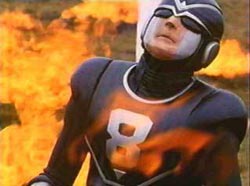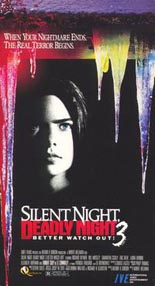
 Following the unintentional “Garbage day!” greatness of the first sequel, the killer-Claus franchise continues its slay ride with Silent Night, Deadly Night III: Better Watch Out! (exclamation point theirs). The most notable thing about it is its trio of future David Lynch players: Mulholland Dr.’s Laura Harring and Twin Peaks’ Richard Beymer and Eric Da Re. It’s more fun to imagine Lynch watching this than to do so yourself. Furthermore, you’re better off watching The Terror, the 1963 Roger Corman mishmash that appears on the tube a couple of times.
Following the unintentional “Garbage day!” greatness of the first sequel, the killer-Claus franchise continues its slay ride with Silent Night, Deadly Night III: Better Watch Out! (exclamation point theirs). The most notable thing about it is its trio of future David Lynch players: Mulholland Dr.’s Laura Harring and Twin Peaks’ Richard Beymer and Eric Da Re. It’s more fun to imagine Lynch watching this than to do so yourself. Furthermore, you’re better off watching The Terror, the 1963 Roger Corman mishmash that appears on the tube a couple of times.
Ricky Caldwell, the head case-cum-homicidal Kris Kringle, is played this time by genre fave Bill Moseley (The Devil’s Rejects). Instead of rocking the Santa suit throughout, he’s most often clad in a hospital gown and something like a spaghetti colander over his otherwise exposed brain. That’s because Ricky, shot to shreds by the police at the end of Part 2, has been revived six years later as part of sketchy research that brain scientist Dr. Newbury (Beymer) is conducting among the comatose. Despite his vegetative state, Ricky has acquired psychic abilities, which he uses to link up with Laura (Samantha Scully, Best of the Best), a young woman with no eyesight and a rather sour ’tude.
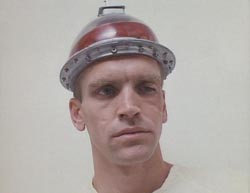 Vis-à-vis the ESP, Ricky repeatedly gives Laura a graphic heads-up of the murders to befall the supporting characters, yet you’d hardly know it since she and her upturned nose just go about their snooty business and, hey, it’s Christmas Eve, dammit. She and her brother, Chris (Da Re) are going to Grandmother’s house for the holiday, and he’s brought along his new girlfriend, Jerri (Harring), whom Laura immediately dislikes. To be fair, Jerri doesn’t help matters with the icebreaker, “So, tell me, how long have you been handicapped?” (Chris is only slightly less crude when he addresses his sister: “Who said you have to be the world’s champion blind orphan?”) Inevitably, Ricky follows them with intent to harm … but only after Harring’s equally inevitable disrobing.
Vis-à-vis the ESP, Ricky repeatedly gives Laura a graphic heads-up of the murders to befall the supporting characters, yet you’d hardly know it since she and her upturned nose just go about their snooty business and, hey, it’s Christmas Eve, dammit. She and her brother, Chris (Da Re) are going to Grandmother’s house for the holiday, and he’s brought along his new girlfriend, Jerri (Harring), whom Laura immediately dislikes. To be fair, Jerri doesn’t help matters with the icebreaker, “So, tell me, how long have you been handicapped?” (Chris is only slightly less crude when he addresses his sister: “Who said you have to be the world’s champion blind orphan?”) Inevitably, Ricky follows them with intent to harm … but only after Harring’s equally inevitable disrobing.
The Better Watch Out! subtitle could double as a harbinger of the damage done to Monte Hellman’s career. How does one go from a counterculture cult classic (Two-Lane Blacktop) to a cheaper-than-Corman VHS premiere like this? (Don’t answer — we know Warren Oates had a hand.) For having a “name” (in certain circles) behind the camera, Silent Night, Deadly Night III has nothing to show for it; the work he presents is as clod-ridden and humdrum as his not-famous predecessors. At least one would think Hellman would have the good sense to end the film any other way than to plop Moseley into a tux and superimpose an image of him turning to the viewer to offer a smile and five words: “And a Happy New Year.” —Rod Lott

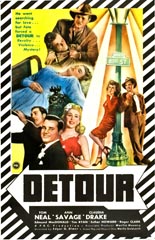
 Al Roberts (Tom Neal,
Al Roberts (Tom Neal, 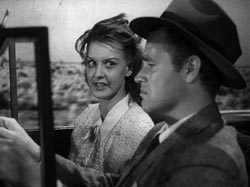
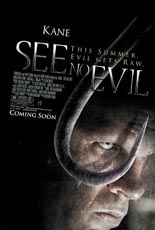
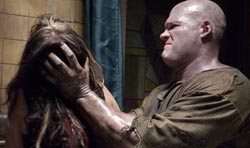
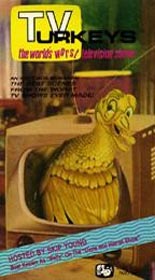
 With dumb host patter supplied by
With dumb host patter supplied by 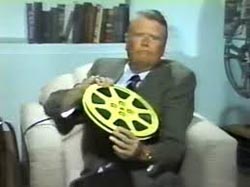
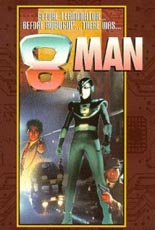
 Claiming to be a precursor to both
Claiming to be a precursor to both 